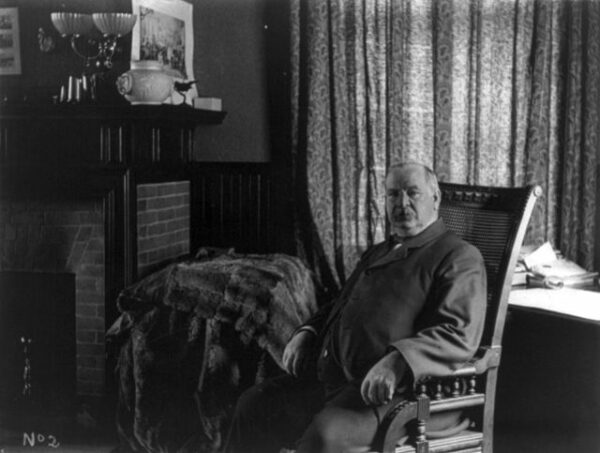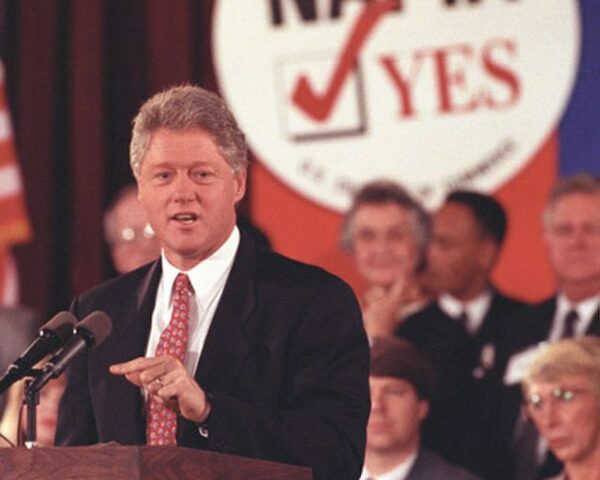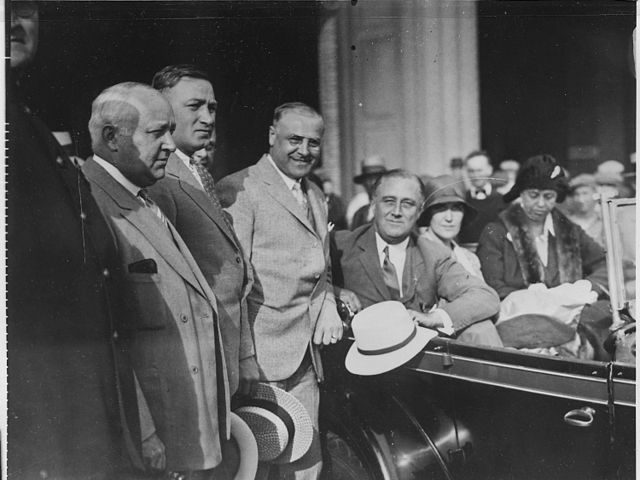On June 13, 1893, the president of the United States learned he would have to disappear for a few days. Shortly into his second term in The White House, Grover Cleveland noticed a rough spot on the roof of his mouth. After consulting the presidential doctor, Major Robert O’Reilly, he soon learned that he had a a “lesion” described as “nearly the size of a quarter with cauliflower granulation.”
After removing a piece, O’Reilly sent the sample anonymously to the Army Medical Museum and consulted with Dr. William Welch at Johns Hopkins. Both diagnoses reported malignancy. The president of the United States had mouth cancer.
O’Reilly decided to consult two of the best surgeons available on the president’s condition. William W. Keen and Joseph D. Bryant. Bryant has been described by Hoang and O’Leary as “an intelligent choice, since he had only 3 years earlier written a review of 250 cases of excision of the superior maxilla.” The physicians agreed that the president would have to undergo surgery, explains one historian.
However, there were political considerations. A nationwide depression had just gotten underway and in the name of strengthening the economy, the president was leading a movement to repeal the Sherman Silver Purchase Act and uphold the gold standard. In August, the president had to address Congress and thus, he had to be able to recover from the surgery’s effects by that time. It was already late June. Furthermore, the president was concerned that reports of his condition could prove even more unsettling, so the surgery would have to be done in secret.
Commodore Elias Benedict, a friend of the President, had a yacht, the Oneida, and it was decided to perform the surgery there. The yacht’s saloon was converted into a surgical center. Besides O’Reilly, Bryant
and Keen, the surgical team would consist of a dentist, Ferdinand Hasbrouk, Edward Janeway, and J.F. Eidmann. Hasbrouk would be the one who would administer anesthesia to the president, a not-uncommon practice at that time. His presence proved useful at a later point when rumors circulated about the surgery; White House aides said that the president’s only problem was the removal of a tooth and fortunately, a dentist was on board.
The surgery was performed on July 1, 1893. The President’s mouth received disinfectant and Hasbrouk administered anesthesia and removed two of the president’s teeth. Cocaine was used as a topical anesthetic as Bryant and Keen, making use of a French made cheek retractor began the surgery.”
“And it was on that yacht that this operation was performed,” historian and author of The President Is a Sick Man Matthew Algeo told NPR. “They assembled a team of six surgeons. [It] took about 90 minutes. They used ether as the anesthesia and they removed the tumor along with about five teeth and a large part of the president’s upper left jawbone.”
The surgeons successfully extracted the tumor through the president’s mouth, which meant few would notice any scarring and the president’s “trademark mustache was left untouched — key conditions for keeping the public in the dark.”
Merely a few months later, one journalist started sniffing around the presidential “fishing trip.” Philadelphia Press reporter E.J. Edwards wrote a story about the surgery, using one of the presidential doctos as a source, but the White House staunchly denied it and launched “a smear campaign” in an effort to discredit the reporter and ruin his career.
“So nobody believed E.J. Edwards,” Algeo continued. “He was dismissed as a disgrace to journalism.”
Edwards’ story only finally came to light years after the Cleveland died when William Williams Keen, one of the surgeons that day, came forward in 1917, nine years after Cleveland died.
“Twenty-four years after the operation — when all the other principals were dead — there were only three witnesses left to the operation,” the historian explained. “And [Keen] decided it would be the right thing to do to publish an article to explain what really happened and to vindicate E.J. Edwards.”
According to Algeo, Grover Cleveland’s confidential tumor is part of a long history of covering up presidential illnesses from the public.
“In 1919, Woodrow Wilson suffered a stroke and was more or less incapacitated for the last 18 months of his second term; Warren Harding covered up his heart disease; John F. Kennedy hid his Addison’s disease; and when Ronald Reagan underwent operations for cancer while in office, his wife, Nancy, insisted that the word ‘cancer’ not be used in any official statement or release.”
“Even as late as the 1980s this idea of the president having cancer carried some sort of stigma with it,” Algeo concluded.






